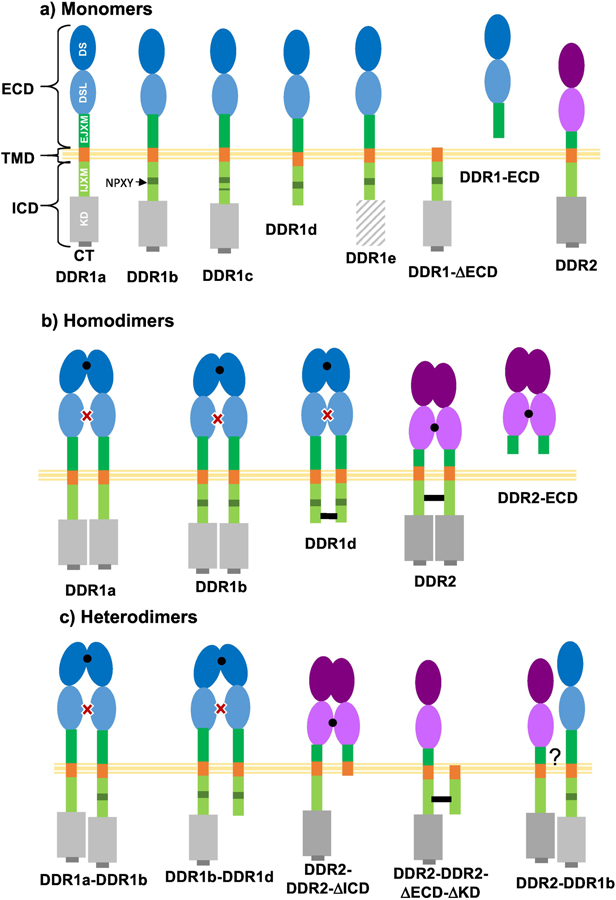Figure 1.

Members of the DDR family known to exist as (a) monomers, (b) homodimers and (c) heterodimers before ligand stimulation. (a) Besides naturally occurring isoforms DDR1a to DDR1e, DDR1 is also known to shed its ECD resulting in a membrane tethered C-terminal fragment lacking the DDR1 ECD (DDR1-ΔECD) and a soluble DDR1 ECD. Only one naturally occurring isoform of DDR2 has been reported. (b) Homodimers and (c) heterodimers reported to exist for recombinantly expressed full-length or truncated receptors. Other possible combinations of homo- and heterodimers may exist but have not been reported. Black dots and dashes represent regions mediating dimer contacts. Red cross indicates glycosylation in DS-like domain which inhibits dimer formation in DDR1. DS: discoidin; DSL: discoidin like; EJXM: extracellular juxtamembrane; TMD: transmembrane domain; IJXM: intracellular juxtamembrane; KD: kinase domain; CT: C-terminal.
